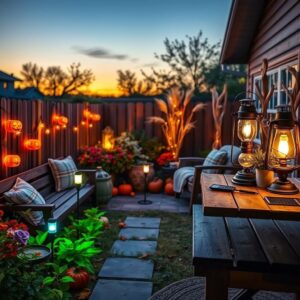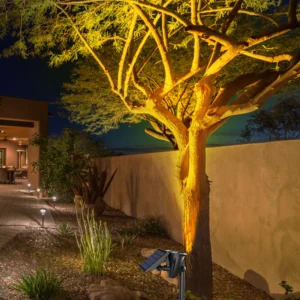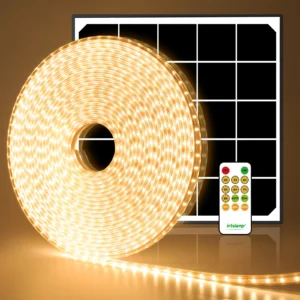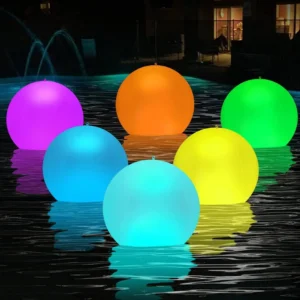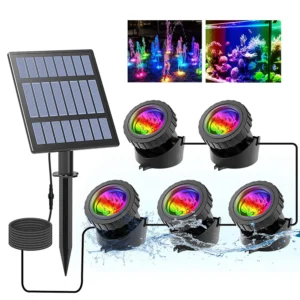In landscape design, effective lighting techniques play a crucial role in creating inviting outdoor spaces. While many people lean toward up lighting, incorporating down lighting is equally important. Down lighting offers a natural illumination that highlights plants and animals below, adding depth and texture to your design.
Selecting the Right Fixtures
When it comes to landscape lighting, the selection of fixtures is critical for achieving optimal illumination. Directional down lights and pendants serve distinct yet complementary roles in creating a well-lit outdoor environment.
Directional Down Lights
These fixtures are designed to cast light downward, effectively highlighting specific areas while minimizing glare. By strategically placing directional down lights in trees or along pathways, you can accentuate the textures of tree bark and foliage, creating a visually appealing scene. They are particularly effective in illuminating the interior branching structures of trees, which might otherwise remain in shadow. This not only enhances the aesthetic but also draws attention to the unique characteristics of your landscape.
Pendants
Pendants offer a more versatile lighting option. These fixtures can hang from overhead structures like pergolas or mature trees, casting a warm glow over larger areas. Pendants are ideal for highlighting focal points, such as a beautiful Palo Verde tree or a gathering space in your yard. They provide a broad light output that can illuminate both the ground and surrounding features, making them excellent for areas where people congregate.
Combining Both Types
Using a combination of directional down lights and pendants allows for layered lighting, which enhances depth and dimension in your landscape. While down lights can create drama and highlight intricate details, pendants can offer a soft, inviting ambiance. This dual approach not only ensures functional lighting for safety but also creates a visually stunning outdoor environment.
For best results, consider the height and positioning of each fixture. Directional down lights should be placed at varying heights to create a dynamic lighting effect, while pendants should hang low enough to provide comfortable illumination without obstructing views. Together, these fixtures work harmoniously to elevate your landscape design, making it both functional and beautiful.
Creating Balance in Lighting
Achieving a harmonious balance between up lighting and down lighting is essential for creating an inviting atmosphere in landscape design. Each lighting technique serves a distinct purpose, and when used together, they enhance the overall aesthetic and functionality of outdoor spaces.
Understanding Up Lighting
Up lighting is primarily focused on illuminating vertical elements such as trees, architectural features, and sculptures. This technique highlights textures, colors, and the unique shapes of these structures, drawing attention to their beauty and creating a dramatic effect. Up lighting can evoke a sense of grandeur, especially when illuminating tall trees or significant landmarks in your landscape.
The Role of Down Lighting
In contrast, down lighting provides a more subtle illumination that focuses on the ground and horizontal surfaces. It helps to enhance safety by illuminating pathways, patios, and gardens, making these areas functional and accessible at night. Down lighting also creates a soft, inviting glow that fosters a sense of comfort, encouraging people to gather and enjoy outdoor spaces.
Creating a Seamless Transition
To create a cohesive lighting design, it’s important to transition smoothly between up lighting and down lighting. This can be achieved by considering the layout of your landscape and the specific features you want to highlight. For instance, placing up lights around a cluster of trees can draw the eye upward, while strategically positioned down lights on pathways can guide visitors safely through the space.
Layering Light for Depth
Layering light is a key strategy in creating balance. By integrating both up and down lighting, you add depth and dimension to your landscape. For example, using up lighting to highlight the trunks of trees while employing down lighting to illuminate the area underneath can create an enchanting interplay of light and shadow. This contrast adds visual interest, making the space feel dynamic and alive.
Adjusting Brightness and Color
Consider adjusting the brightness and color temperatures of your lights to enhance the transition between the two types. Warmer tones in down lighting can create a cozy feel, while cooler tones in up lighting can evoke a more dramatic effect. This careful calibration allows you to set the desired mood, whether it’s for an intimate gathering or a lively outdoor party.
Aesthetic and Functional Considerations
When designing outdoor lighting, striking a balance between aesthetics and functionality is essential. Both elements play a crucial role in transforming your landscape into a visually appealing and safe environment.
Safety First
One of the primary functions of landscape lighting is to ensure safety after sunset. Well-lit pathways, patios, and garden areas reduce the risk of accidents, helping visitors navigate safely through your outdoor spaces. Using down lighting strategically positioned along walkways and near steps can illuminate potential hazards, such as uneven surfaces or obstacles, guiding people safely through the area. This is particularly important in residential settings, where guests may be unfamiliar with the surroundings.
In public spaces like parks, commercial properties, or hotel grounds, effective lighting design is even more critical. It fosters a sense of security, encouraging people to use and enjoy these areas at night. Incorporating features like motion sensor lights can enhance safety while conserving energy, ensuring that pathways and gathering areas are illuminated only when needed.
Showcasing Natural Beauty
While safety is paramount, the aesthetic appeal of outdoor lighting cannot be overlooked. Effective landscape lighting enhances the natural beauty of your surroundings, highlighting key features such as trees, gardens, and architectural elements. Up lighting can accentuate the textures and colors of tree bark, while down lighting can showcase the delicate details of flowers and foliage, creating a breathtaking nighttime landscape.
Creating Atmosphere and Mood
The right balance of aesthetic and functional lighting can transform an outdoor space into a magical experience. By carefully choosing color temperatures and brightness levels, you can evoke different moods. Warm, soft lighting creates a cozy and inviting atmosphere, perfect for social gatherings or quiet evenings. Conversely, cooler lighting can create a more vibrant and lively feel, ideal for outdoor parties or events.
Designing with Purpose
When planning your landscape lighting, consider how each fixture contributes to both safety and aesthetics. For instance, decorative lanterns not only provide illumination but also serve as attractive design elements. Integrating these fixtures into your overall landscape design can enhance visual interest while fulfilling functional requirements.
Consideration of Lighting Techniques
Utilizing a variety of lighting techniques can further enhance the safety and beauty of your outdoor spaces. For example, path lights can guide visitors along walkways, while accent lights can draw attention to focal points like sculptures or water features. This layered approach adds depth and dimension, making your landscape more inviting and visually dynamic.
Practical Applications of Down Lighting
Down lights are versatile fixtures that can significantly enhance the ambiance and safety of various outdoor settings, including hotels, courtyards, parks, and residential areas. Their ability to provide soft, downward illumination makes them ideal for creating inviting spaces while ensuring safety for guests and visitors.
Hotels and Hospitality Venues
In hotel settings, down lights are crucial for establishing a warm and welcoming atmosphere. They can be used in outdoor dining areas, patios, and lounges to create inviting environments for guests to relax and socialize. By installing down lights in pergolas or overhead structures, hotels can provide ample illumination that fosters a cozy ambiance, encouraging guests to spend time outdoors, especially during evenings.
Moreover, down lights can enhance safety in these venues by illuminating walkways, stairs, and other potentially hazardous areas. This not only ensures that guests can navigate the property comfortably but also enhances their overall experience by making the outdoor environment feel secure and well-maintained.
Courtyards and Garden Spaces
Courtyards are another excellent application for down lighting. These areas often serve as focal points in both residential and commercial landscapes, and down lights can enhance their beauty while providing functional illumination. For instance, down lights positioned in trees or on walls can create a serene, softly lit atmosphere that showcases the natural features of the courtyard, such as water fountains, sculptures, or landscaped gardens.
In addition to aesthetics, safety is a significant concern in courtyards. Down lights can illuminate paths, seating areas, and garden borders, ensuring that visitors can enjoy these spaces without the risk of tripping or stumbling. This is particularly important for venues hosting events or gatherings, where multiple guests may be moving around in the evening.
Public Parks and Recreational Areas
In public parks and recreational spaces, down lighting plays a vital role in enhancing safety and usability. By illuminating trails, playgrounds, and picnic areas, down lights make these spaces accessible for families and individuals after dark. They encourage evening use of parks, promoting community engagement and outdoor activity.
Additionally, down lights can be used to highlight specific features such as benches, art installations, or botanical displays, enhancing the overall aesthetic appeal of the park. This not only improves the visitor experience but also instills a sense of pride in the community.
Residential Settings
In residential landscapes, down lights can be applied in various ways to create inviting outdoor living spaces. Homeowners can use down lights to illuminate patios, decks, and outdoor kitchens, making these areas more functional for evening gatherings. By strategically positioning down lights in trees or on the exterior of the house, homeowners can create a warm and inviting environment that encourages outdoor entertaining.
Furthermore, down lights can improve safety around the home by illuminating driveways, walkways, and entrances. This thoughtful application ensures that family members and guests can navigate the property safely, enhancing peace of mind.
Enhancing the Lighting Experience
Achieving natural lighting effects in landscape design can elevate the visual appeal of outdoor spaces while creating a serene atmosphere. The interplay of light and shadow is crucial in this process, and adjusting brightness effectively can help you achieve the desired ambiance. Here are some tips for enhancing the lighting effects in your landscape:
1. Layered Lighting Techniques
Utilizing a combination of up lighting and down lighting allows for a more dynamic lighting scheme. Layering different types of fixtures—such as path lights, spotlights, and wall sconces—can create depth and texture. By strategically placing these lights, you can enhance the natural beauty of your landscape, showcasing elements like trees, shrubs, and architectural features while casting gentle shadows that mimic the effects of natural moonlight.
2. Use of Filters and Lenses
Filters and lenses can significantly impact the quality of light in your outdoor space. Applying warm filters to down lights can create a soft, inviting glow that resembles the warmth of sunset or moonlight. Conversely, cooler filters can provide a more vibrant and energetic feel. Experimenting with different filters can help you find the right balance for your specific landscape and the mood you want to convey.
3. Dimming Capability
Incorporating dimmable fixtures allows for greater control over the brightness of your lighting scheme. Dimming capabilities enable you to adjust the intensity of light based on the time of day or the specific event. For instance, brighter settings may be ideal for gatherings or celebrations, while softer lighting can create a tranquil environment for quiet evenings. Smart lighting systems can offer programmable settings, allowing for seamless transitions throughout the night.
4. Positioning and Angling
The positioning and angle of your lights can dramatically affect the quality of illumination and shadows. For down lights, aim to position them at varying heights to create an interesting visual effect. Adjusting the angle of the fixtures can help highlight textures and colors while minimizing glare. Experimenting with different placements can help you achieve the perfect balance of light and shadow, creating a natural look that enhances your landscape.
5. Utilizing Moonlighting Techniques
Moonlighting is a technique that mimics the soft, diffused glow of moonlight. To achieve this effect, position down lights high in trees or on structures, angling them downward to illuminate the ground below gently. This creates soft shadows and highlights the natural features of the landscape, providing an ethereal quality that enhances the overall ambiance.
6. Emphasizing Natural Features
Identify key natural features in your landscape that you want to highlight, such as unique trees, water features, or ornamental plants. Use lighting to draw attention to these elements, creating focal points that enhance the overall design. For instance, up lighting can accentuate the height and structure of a tree, while down lighting can softly illuminate nearby flower beds, adding layers of interest.
7. Seasonal Adjustments
Consider how seasonal changes may affect your lighting design. Different seasons bring varied natural light conditions and landscape colors. During fall, for example, adjusting brightness to highlight autumn foliage can create a stunning effect. Similarly, in winter, focusing on creating warm, inviting spaces can help combat the chill of the season.
Conclusion
Incorporating both up lighting and down lighting in your landscape lighting techniques will transform your outdoor spaces into beautiful, safe, and inviting environments. By understanding the balance between these lighting methods and selecting the right fixtures, you can enhance the overall design and functionality of your landscape, ensuring it shines beautifully at night.


